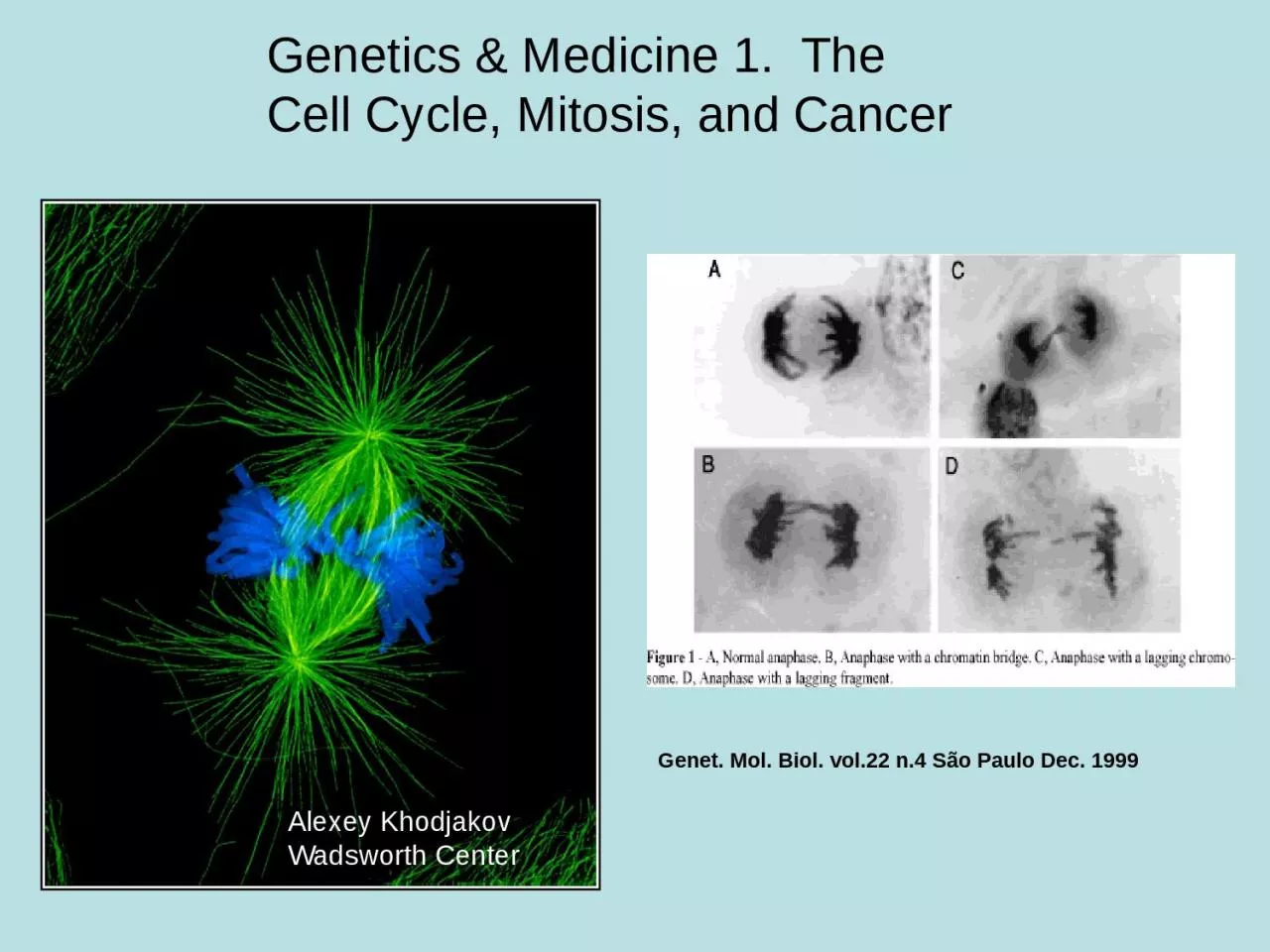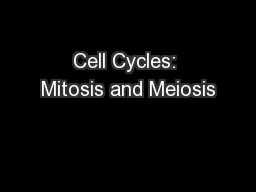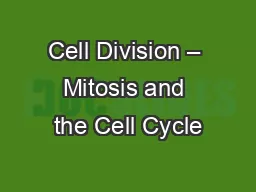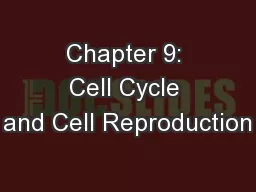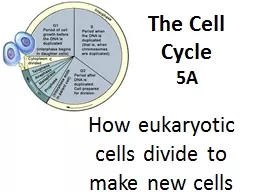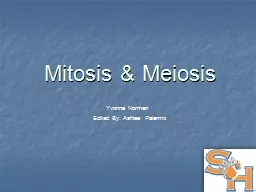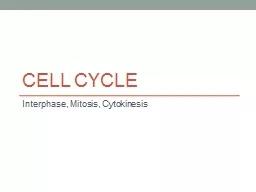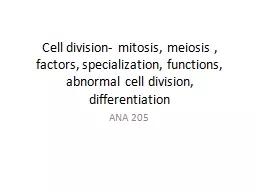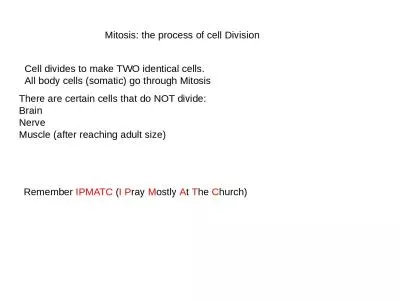PPT-Genetics & Medicine 1. The Cell Cycle, Mitosis, and Cancer
Author : TootsieWootsie | Published Date : 2022-07-28
Alexey Khodjakov Wadsworth Center Genet Mol Biol vol22 n4 São Paulo Dec 1999 Karyotype of Pancreatic Cancer Cells What do you notice that appears odd amongst
Presentation Embed Code
Download Presentation
Download Presentation The PPT/PDF document "Genetics & Medicine 1. The Cell Cyc..." is the property of its rightful owner. Permission is granted to download and print the materials on this website for personal, non-commercial use only, and to display it on your personal computer provided you do not modify the materials and that you retain all copyright notices contained in the materials. By downloading content from our website, you accept the terms of this agreement.
Genetics & Medicine 1. The Cell Cycle, Mitosis, and Cancer: Transcript
Download Rules Of Document
"Genetics & Medicine 1. The Cell Cycle, Mitosis, and Cancer"The content belongs to its owner. You may download and print it for personal use, without modification, and keep all copyright notices. By downloading, you agree to these terms.
Related Documents

